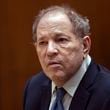The Braves moved rookie pitcher Mike Soroka from the 10-day to the 60-day disabled list Wednesday. The team emphasized the move did not reflect any change in his condition – inflammation in the rotator cuff of his throwing shoulder – or the time frame of his expected return.
Rather, it was a procedural move made because the Braves needed to open a spot on the 40-man roster to add reliever Wes Parsons for Wednesday afternoon’s series finale against the Reds.
And since Soroka, an elite prospect and the youngest pitcher in the majors at 20, is only one week into a planned four-week period of no throwing, he wouldn’t have been ready to pitch again for at least two months from June 20, the retroactive date for his placement on the DL.
“It’s not a surprise for us, it’s just a formality,” Braves general manager Alex Anthopoulos said. “The thought is just no-throw for about four weeks. From that point forward he’ll start playing catch, get stretched out, get some bullpens, start to build up to be a starter. I mentioned to him five or six innings and he mentioned seven or eight innings that he wanted to build up to. (Anthopoulos smiled.) That just takes time, so it’s just like spring training all over again.
“So when you look at, from the placement of the DL with the backdate, being able to rest and recover for about a month, then build up, 60 days is pretty standard. It fits. It doesn’t change anything.”
Soroka went on the DL for the second time in five weeks following his June 19 start at Toronto, where the native Canadian gave up eight hits and four earned runs in 4-2/3 innings and had tightness in back of his shoulder again. That was his second start since returning from a one-month DL stint, after which he took a no-hitter to the seventh inning of his return start June 13 against the Mets.
An MRI exam on Soroka’s shoulder last week was similar to one he had last month, showing no structural damage, no tears, just inflammation.
Soroka is 2-1 with a 3.51 ERA in five starts and has 21 strikeouts with seven walks in 25-2/3 innings. The Braves will be especially cautious with his recovery this time.
“Just needs to rest,” Anthopoulos said. “It was very similar to last time. Now that it’s been a recurrence, we just felt like give it more time to heal, more time to rest. ... Like anything, if four weeks from now he doesn’t feel as good, or three weeks from now he isn’t recovering, then we’ll deal with that as it comes. But right now that’s the expectation.
“Right now he’s feeling better every day. Just continue to give him rest and when he’s completely cleared he’ll start throwing and build up as a starter again. But to project what’s going to happen four weeks, five weeks, six weeks from now – I’m sure we’ll get him checked out a few weeks down the road, maybe a month down the road. But that’s the plan.”
The fact that Soroka is a pitcher, and a starting pitcher at that, makes the DL requirement extend quickly once the recovery extends beyond anything requiring more than week or two. For that reason, the Braves already had planned on Soroka being out at least a couple of months once he went back on the 10-day DL last week.
“Because he’s a starter, the longer you’re off from throwing, you’re basically starting from scratch to build up again and build up the innings,” Anthopoulos said. “So unless they tell you he’s going to be down again for a week to 10 days, you realize if it’s going to be at least a few weeks of no-throw, then you’re starting over again. All the work you do to build up, you lose that.
“So we knew that was going to be the case. We just didn’t want to put a timeline on it, because if he feels great in three weeks, or if it’s five weeks (of not throwing) instead of four, it’s very tough to pinpoint those things. They just felt he needs extended rest to have a full recovery, and then he can start throwing again. ...
“The fact that it’s a recurrence -- I think the first time he’d have about two weeks of no-throw. But he needs more time (now). We don’t have it down to the days, but the thought is, around that four-week period of no throwing, then get it going again. Now if he feels like he needs an extra five or six days, we’ll do that. And as he builds up, going through bullpens and long-tossing, if we need to back him off we’ll just adjust it as we go along.”
About the Author





